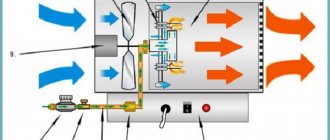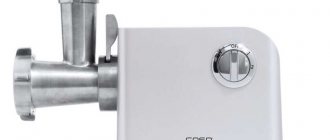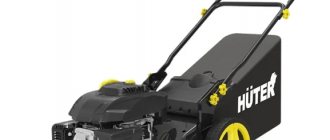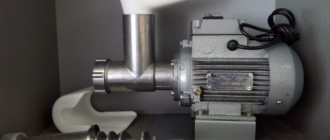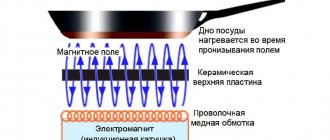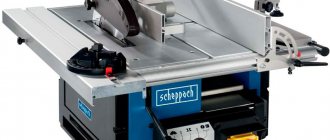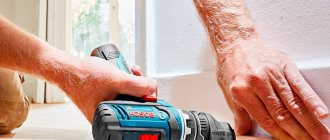The actions of machines on a large construction site seem coordinated and very fast. Just yesterday a huge bucket was digging into the ground, and today there is already the first level of the future building. This is on large-scale construction sites. But even if you need to build a small country house, the principles are the same: first you need to prepare the soil and tamp it down. Buying expensive mechanisms for temporary use is not advisable. DIY vibrating plate – a real and affordable solution.
A vibrating plate is a special unit designed for compacting soil, concrete surfaces, and asphalt surfaces.
Purpose of vibrating plates
A vibrating plate is a mechanism designed to compact loose soils and bulk building materials. In addition, such a mechanism is widely used for vibration processing of semi-dry concrete mixtures and asphalt when constructing floors and paving surfaces. The use of such a tool is very effective when working on a small plot of land and in cramped spaces.
Homemade electric vibrating plate.
The construction of sidewalks, garden paths, driveways and parking lots near a private house using a vibrating plate is carried out much faster, while ensuring high quality of work. Compacting the bottom of the trenches when laying utilities eliminates their possible damage in the event of subsidence of loose soil. These and other advantages encourage many home craftsmen to make such equipment themselves and use it in construction work.
Vibrating plate weight
Based on criteria such as mass, slabs can also be divided into categories.
- Up to 90 kg. The use of low-weight vibrating plates is relevant in home construction, landscaping of courtyards, and in agriculture.
- Light slabs up to 200 kilograms are used for laying asphalt and compacting soils with large stones and crushed stone.
- Medium devices include devices weighing up to 500 kg, which are capable of increasing the density of soil and asphalt in large layers.
- Heavy equipment is used when strong compaction is required.
Depending on the job, one or another vibrating plate is chosen. So, for example, machines up to 200 kg are suitable for a soil layer of no more than 15 centimeters. Medium and light machines are used to compact layers up to 25 centimeters and compact paving slabs. Heavier equipment is used for repairing and laying road surfaces, backfilling trenches, and deep soil compaction.
The choice is influenced not only by the weight of the machine, but also by vibration amplification or centrifugal force. This indicator is very important, since machines with a force of less than 10 kN, for example, are not suitable for asphalt. The use of a vibrating plate with a smaller base area is the most common, since in this case the impact force is distributed evenly.
Advantages of a homemade tamping machine
The main advantage of a home-made vibrating plate is its low cost and the ability to perform high-quality and efficient work. The simple design ensures the reliability and durability of the mechanism. In addition, a homemade vibrating plate allows you to:
- Safely tamp any surfaces;
- reduce the amount of manual labor when performing work;
- improve the quality of footpaths and platforms;
- It is good to compact dry cement and semi-dry concrete mixtures when laying them.
Having a mechanism for compacting loose soils and bulk materials will allow you to carry out any amount of landscaping and exterior design work.
Review of purchasing options.
Application of Atlas Copco vibrating plate
Atlas Copco vibrating plates are used for road construction, compacting deep soil and asphalt, equipping playgrounds and parking lots, compacting paving slabs and paths.
Atlas Copco equipment is popular in the construction industry.
Among the models of this global brand, you can choose a unit for various types of work. The range is represented by machines weighing from 54 to 141 kilograms for compacting soil and asphalt. Atlas Copco petrol and diesel vibratory rammers with manual and remote control are highly productive, mobile and compact machines.
Mechanism design
The main working element is a heavy metal platform, which can be made of gray ductile iron or steel. The vibration effect on it is transmitted from a mechanical vibrator driven by a gasoline, diesel or electric engine.
Drawing of a homemade vibrating plate.
A durable handle is provided to control the vibrating plate as it moves across the work area. Additionally, the design may include a fuel tank or starting electrical equipment. The engine and vibration device are installed on a frame, which is mounted directly on the tamping platform.
Specifications
Each vibrating plate has its own performance characteristics, which affect the features of its use and scope of application. So, when choosing vibrating plates, you should pay attention to the following technical characteristics: 1. Dimensions of the base plate (indicated in mm). 2. Vibration frequency (indicated in Hz). 3. Depth of compaction (indicated in mm). 4. Vibration amplitude (indicated in mm). 5. Type of engine (electric, diesel or gasoline). 6. Power (kW). 7. Unit weight (kg). 8. Electricity or fuel consumption (kW/h or l/h). 9. Maximum productivity of the device (m2/h). 10. Dimensions of the unit (indicated in mm).
Vibrating plate in operation: https://www.youtube.com/watch?v=TivD_a1CKI0
Making a tamping plate
The plate for the vibrating tamper can be manufactured at the factory or made by hand from a metal sheet with a thickness of at least 8 mm. A homemade vibrating plate should provide such a weight to the device that it will give a tight fit to the surface being treated.
Its dimensions should not exceed 800 x 500 mm, excluding the curved edge, which will ensure convenient operation and the ability to use the device without additional assistants.
A flat steel plate, when moving over soil or concrete mixture, will constantly cling to an uneven surface. To avoid this, the front and rear edges of the slab are slightly bent upward, resulting in a structure reminiscent of a sled. To do this, stepping back a little from the edge, you need to make a cut in the metal to a depth of 5-6 mm using a grinder and bend the strip. Repeat this operation on the other edge of the sheet. The contact line after the bend must be welded using electric welding.
Making a tamping plate.
To install the motor and vibration mechanism on the platform, you need to secure the support frame. It can be made from two installed pieces of metal channel. They must be installed parallel to each other transverse to the axis of the tamping platform. Drill mounting holes for the motor and vibrator in them and weld them with electric welding.
Do-it-yourself vibrating plate: how the device works
The working mechanisms have an impact effect on the surface of the slab, which produces a certain number of movements when in contact with the ground - this forms the basis of the operating principle of this device. Kinetic energy upon impact is converted into other types of energy. The pressure on the surface instantly increases, and then the same instantaneous decrease occurs. Therefore, in addition to impact force, speed and frequency are effective. As a result of this action, small particles fill the voids, resulting in a very dense, even coating.
Its characteristics depend on the quality of the material from which the work plate is made.
To make slabs with your own hands, two types of materials are used: cast iron and steel.
Note! When choosing a unit with a cast iron stove, be sure to pay attention to the grade of metal. A low-quality cast iron slab may develop cracks when used over gravel for a long time.
The size of the slab is also important during operation: the smaller its area, the better its tamping qualities. Vibration indicators determine how well the surface will be compacted. If the slabs have the same mass, but different vibration forces, then a unit with higher performance will compact better.
Read the continuation of the article on the next page. To move to the next part of the article, use the page navigation numbers.
Engine selection and installation
When making a vibrating plate with your own hands, diesel engines are usually not used. Yes, they are reliable and durable, diesel fuel is cheaper than gasoline, but these engines are too expensive and bulky for a small home machine. The most popular mechanisms are those with a gasoline internal combustion engine and with an electric drive.
The gasoline engine makes it possible to perform work regardless of the presence of a nearby energy source. This vibrating plate is in demand among small construction teams performing contract work on private development sites.
To carry out work within the personal territory, it is better to use a tamping machine with a 220V electric motor. It operates much quieter, does not require refueling, and the power supply can be easily provided through an extension cord that can be extended to any location on the site.
The electric motor is fixed to a welded channel using bolts and connected to the vibration mechanism using a belt drive. If the vibrator eccentric is connected to the motor with a rigid connection or mounted on a shaft, then the motor bearings will constantly fail due to vibration effects.
The structure of the model with a gasoline engine.
The center of gravity of the engine must be on the central axis of the vibration platform. If this is not done, then during operation the vibrating plate made by yourself will constantly move to the side and you will have to make additional efforts to keep it in the desired direction. Vibration-damping pads made of thick rubber must be placed under the motor feet.
Selecting the right unit
Before you buy a vibrating plate, decide for yourself for what purpose and where you will use it; your choice will depend on this. We hope that our following tips will help you decide on the unit:
1. If you need a vibrating plate for laying asphalt, give preference to devices with a water tank. The weight of such devices should be in the range of 50-100 kg, and the centrifugal force should be in the range of 12-15 kN.
2. Devices with a weight of 50-100 kg are also suitable for laying shaped road surfaces. However, they must be equipped with a special mat against chipping tiles and paving stones.
3. To compact industrial floors, it is better to use vibrating plates weighing 100 kg or more. The greater the compaction force required, the greater the weight of the unit must be.
Vibration mechanism
The simplest device for creating vibration vibrations can be made from a piece of metal circle with a diameter of 40-65 mm. To do this, a hole with a diameter of 12-14 mm is drilled parallel to its axis along the entire length. It should be offset from the center by about half the radius. A metal rod of the appropriate diameter must be inserted into this hole and firmly secured with nuts.
Bearings or bronze bushings are installed on the same shaft-rod on both sides, mounted on racks welded to the channel. The height of the stands depends on the diameter of the vibrating roller. On the belt drive side, a pulley is attached to transmit rotational motion from the electric motor to the vibrator. Rotating at high speed, this roller with a shifted center of gravity will create oscillatory movements and transmit them through the racks to the vibrating platform.
Electric vibratory rammer circuit diagram.
You can use a factory-made vibration mechanism. This will provide a higher level of machine reliability, but will entail additional costs.
Device
A reversible vibrating plate is a steel or cast iron flat block, inside of which there is a powerful vibrator.
Operating principle: the vibration exciter receives power, a shaft begins to rotate inside it, transmitting centrifugal vibrations to the plate. It comes into working order. The vibrating unit necessarily has a significant mass, which contributes to high-quality compaction.
Mobile vibrating plates are necessarily equipped with a handle through which the device is controlled.
Torque transmission
It is recommended to use a soft V-belt drive as a transmission to transmit torque from the engine to the vibration mechanism. It will ensure reliable rotation of the eccentric and protect the motor bearings from the effects of vibration.
It is recommended to use double-belt pulleys. This will give greater grip to the belts and ensure trouble-free operation in the event of a break in one of the belts.
To protect against possible injuries, the belt drive must be covered with a protective cover, and if this cannot be done, then a bumper guard must be installed.
Features of a gasoline engine
Gasoline machines, including the Honda vibrating plate, are universal units. They have the following advantages:
- mobility;
- ability to operate in a variety of weather conditions;
- unpretentiousness in maintenance;
- quite high performance.
The gasoline internal combustion “engine” is usually four-stroke. Its power for individual models can vary between 4-14 hp. With. In heavy units weighing 300-500 kg, engines with an additional cooling system are installed. It can be air or liquid.
To start the device, a starter is installed in it. An electric or manual starter type is used. It is recommended to use AI-95 gasoline as fuel.
The disadvantage of gasoline models is the presence of exhaust gases, and therefore such mobile units cannot be used indoors.
Control handle and vibration damping system
During operation, thanks to the front location of the eccentric and the resulting vibrations, the platform with the engine installed on it begins to move along the surface independently. But to set the correct direction of movement, a control handle is needed.
According to its design, it can have one or two inclined posts with a transverse handle-crossbar. It is recommended to install a vibration damping device in the upper part of the handle so that vibrations are not transmitted to the hands during operation. You can use springs as protection; the stand itself can be made of two pipes, one of which will go inside the other. The springs are fixed by steel rings installed on the pipes.
If you have the financial opportunity, then instead of a homemade spring structure, you can install silent blocks from a passenger car. This will provide sufficient vibration damping, and the structure itself will be less noisy.
Maintenance and care of vibrating plates
Regardless of the type, equipment that performs compaction to compact soil requires proper maintenance. Let's highlight the main recommendations:
- At the preparation stage, it is necessary to check the oil and top it up, add fuel (gasoline, diesel fuel). When choosing technical fluids, you must follow the manufacturer's recommendations. In the future, the lubrication should be checked every day.
- New equipment requires running-in for five hours without increased load, followed by system maintenance and oil changes.
- Filters need to be replaced periodically as foreign elements get into them and clog the product. Failure to do this may result in damage.
- The chassis must be periodically cleaned to remove traces of dirt and tar. You can use gasoline/kerosene for this.
- If you have a water tank, you should periodically check it for leaks and damage.
Also during the service process, it is necessary to check parts for damage, monitor the operation of control elements, etc. Detailed instructions for service are provided by the manufacturer.
Possibility of reverse movement
Movements of a homemade vibrating plate made as described above are only possible in one direction. Therefore, after walking a certain distance, you have to turn it around and only then move in the opposite direction. This reduces the speed of work and requires additional physical effort on the part of the operator.
Another drawing of a variant with a gasoline engine.
In order to provide the vibration machine with the ability to reverse movement, it is necessary to install a device that changes the direction of rotation of the motor. After its installation and connection, the vibrating plate will be able to move in two directions.
When the edge of the treated area is reached, the operator turns off the engine and starts rotating it in the opposite direction. The vibrator eccentric will also become reversible and provide the machine with a return movement.
Vibrating rammer as a special case of vibrating plate
Vibrating rammer is an alternative option that involves the use of hand tools. This method is relevant when it is necessary to process small areas, when the use of complex equipment is not necessary. Its features:
- Small sizes.
- The need to keep equipment in an upright position.
- Ability to work in hard-to-reach places due to its small dimensions.
- No need to clear space.
- Compact and easy to store even in a small room.
A vibratory rammer is suitable for compacting a small area and is used to solve some small problems. An example is AvantRM-90 D. This is an electric device for vibratory ramming with an impact force of 9 kN, a ramming depth of up to 40 cm, a base size of 30x30 cm and a weight of 82 kg.
Final work
After assembling the slab, all metal parts must be primed and painted to protect against corrosion. Securely fasten the supply cable to the control handle to prevent the possibility of running over it. The engine switch must be located on the structure itself to provide an emergency stop during operation.
After this, the vibrating plate made by yourself must be tested. Freshly dug soil is best suited for this. Testing on bulk material will not allow you to test operation at full load.
As you can see, it is quite possible to make a vibration machine yourself. But for this you need to have basic knowledge and experience in plumbing and welding.
Areas of application
The main advantages of vibrating plates are their quick payback compared to larger equipment. Also, the advantages include the ability to work in cramped conditions and ease of operation.
Before moving on to the description of the device, it is necessary to note what the vibrating plate is used for. The main areas of its activity are:
- soil preparation before small road works;
- compaction of the asphalt concrete mixture during patching;
- compacting the sandy base before laying paving slabs and the tiles themselves (through a special mat);
- decorative landscaping work, such as compacting gravel paths;
- compaction of the embankment during the laying of tram and railway tracks;
- compaction of various bulk materials and soil before pouring the foundation or laying trenches for installing pipes and communications.

